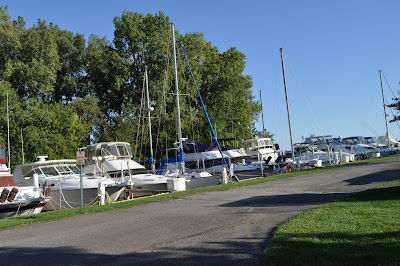

Animated Water Fountain

The McNamara Terminal's ExpressTram is used to transport passengers from one end of the terminal to the other.








Animated Water Fountain

The McNamara Terminal's ExpressTram is used to transport passengers from one end of the terminal to the other.













Speaker at the Banquet was the retired designer from Ford. "Jack Telnack (born John J. Telnack in 1937) was the former global Vice President of Design of the Ford Motor Company from 1980 to 1997. After his training at the Art Center College of Design, Telnack began working as a designer for Ford in 1958, and became the head stylist of the Lincoln-Mercury Division in 1965. In 1966, he became the chief designer of Ford's Australian branch and served as the Vice President of Design for Ford of Europe in 1974. Telnack retired from his post at the end of 1997, and was replaced by J Mays.
Telnack and his team of designers were responsible for ushering a new era of aerodynamic design to America's mainstream marketplace. Cars like the 1979 Ford Mustang, 1983 Ford Thunderbird, 1984 Ford Tempo and Lincoln Mark VII were moderate successes that showed Ford's intention to change their traditional design language for a more contemporary, European style.
Telnack's team of designers, known collectively as "Team Taurus", were responsible for the 1986 Ford Taurus: a car widely acknowledged as the main reason why Ford Motor Company's turnaround strategy was successful during this period. The Taurus' wind cheating design language influenced everything from the Ford F-150 to the Lincoln Town Car in the 1990s.
Lesser known cars like the 1986 Mercury Sable boasted a wind cheating drag coefficient of 0.29. The Sable's light bar grille continued to be a Mercury design hallmark for the next decade. Telnack also helped shape the 1989 Ford Probe and 1993 Lincoln Mark VIII.
Toward the end of his career, Telnack worked on the ovoid themed Taurus from 1996. While criticized widely and deemed too radical for the market's tastes, Telnack also created the "New Edge" style that brought about cars like the 1996 Ford Ka, Ford GT90 concept car and influenced the design of the 1998 Ford Focus."















Selfridge took his first flight on December 6, 1907, on Alexander Graham Bell's tetrahedral kite, the Cygnet, made of 3,393 winged cells. It took him 168 feet (51 m) in the air above Bras d'Or Lake in Nova Scotia, Canada, and flew for seven minutes. This was the first recorded flight carrying a passenger of any heavier-than-air craft in Canada. He also flew a craft built by a Canadian engineer, Frederick W. Baldwin, that flew three feet off the ground for about 100 feet.
Selfridge designed Red Wing, the Aerial Experiment Association's first powered aircraft. On March 12, 1908, the Red Wing, piloted by Frederick W. Baldwin, raced over the frozen surface of Keuka Lake near Hammondsport, New York, on runners and actually flew 318 feet, 11 inches (97.2 m), before crashing. Red Wing was destroyed in a crash on its second flight on March 17, 1908, and only the engine could be salvaged.
In August 1908, Selfridge, along with Lieutenants Frank P. Lahm and Benjamin Foulois, was instructed in flying a dirigible purchased by the US Army in July. The dirigible was scheduled to fly from Fort Omaha, Nebraska, to exhibitions at the Missouri State Fair in St. Joseph, Missouri, with Foulois and Selfridge as the pilots. However, the Army had also tentatively agreed to purchase an airplane from the Wright Brothers and had scheduled the acceptance trials in September. Selfridge, with an interest in both heavier-than-air and lighter-than-air ships, obtained an appointment and traveled to Fort Myer, Virginia.
When the craft hit the ground, both Selfridge and Wright were thrown against the remaining wires. Selfridge was thrown against one of the wooden uprights of the framework, and his skull was fractured. He underwent neurosurgery but died that evening without regaining consciousness. He was 26. Orville suffered severe injuries, including a broken left thigh, several broken ribs and a damaged hip, and was hospitalized for seven weeks. Selfridge was not wearing any headgear, while Wright was only wearing a cap, as two existing photographs taken before the flight prove. If Selfridge had been wearing a helmet of some sort, he most likely would have survived the crash. As a result of Selfridge's death, the US Army's first pilots wore large heavy headgear reminiscent of early football helmets. He was the first aviation fatality.





















 Lt. Col. Alexander Jefferson is one of the Tuskegee Airmen, the 332nd Fighter Group. He served in the U.S. Army Air Corpsduring World War II. His book, "Red Tail Captured, Red Tail Free: The Memoirs of a Tuskegee Airman and Pow," is an excellent personal memoir of the literature of those who served America so well in World War II and after.
Lt. Col. Alexander Jefferson is one of the Tuskegee Airmen, the 332nd Fighter Group. He served in the U.S. Army Air Corpsduring World War II. His book, "Red Tail Captured, Red Tail Free: The Memoirs of a Tuskegee Airman and Pow," is an excellent personal memoir of the literature of those who served America so well in World War II and after.






















